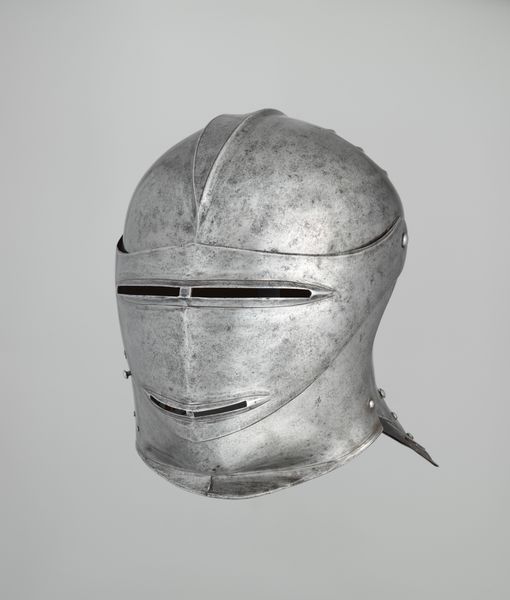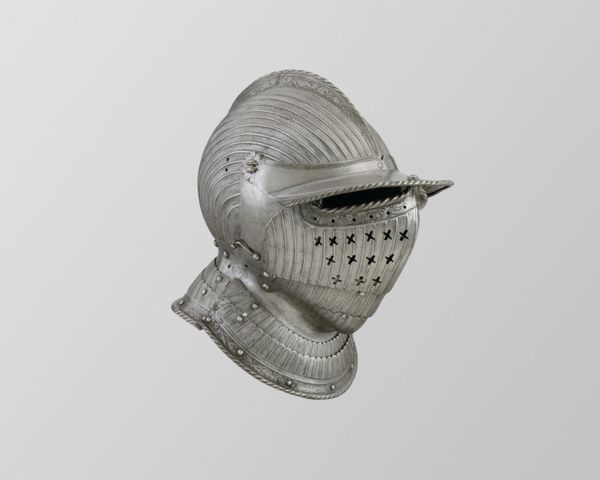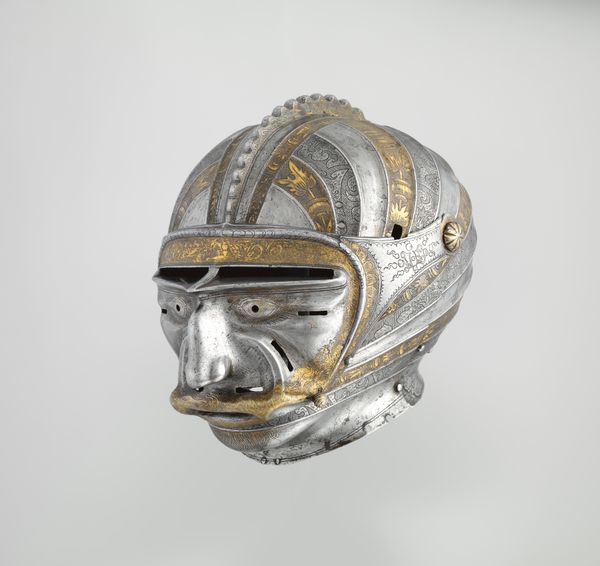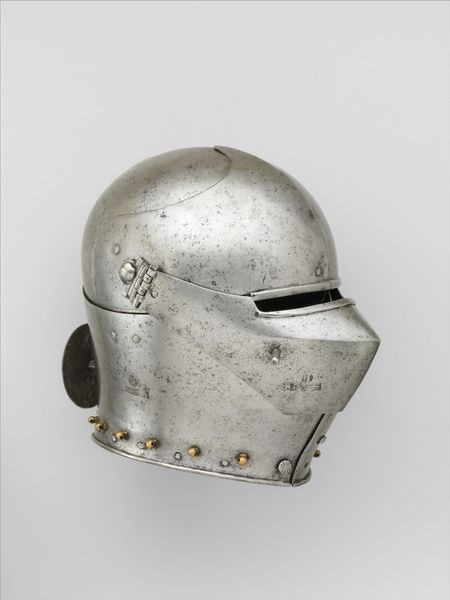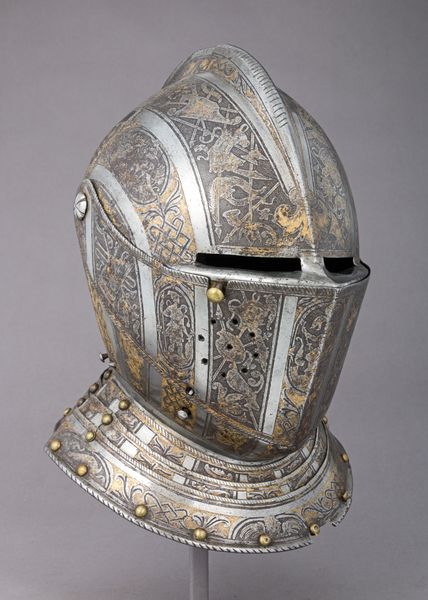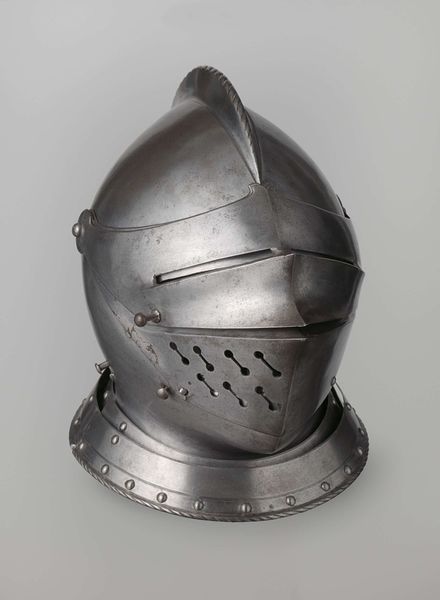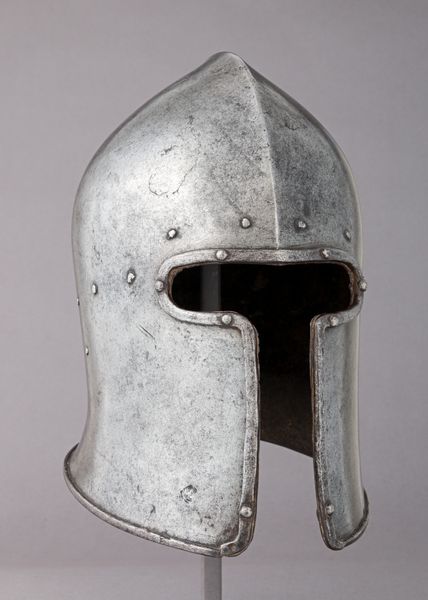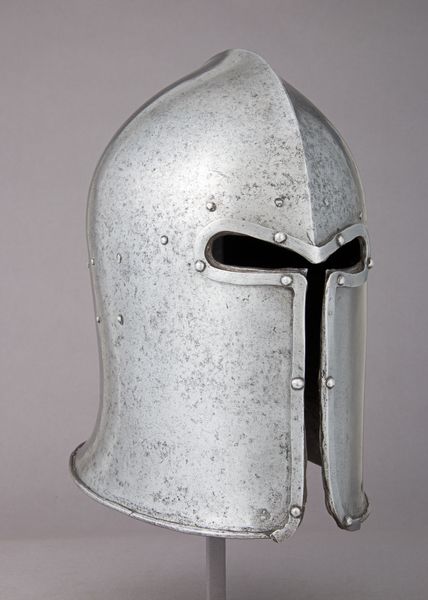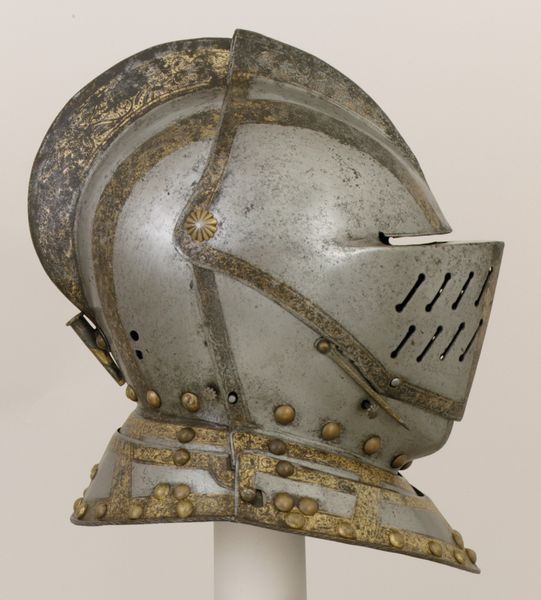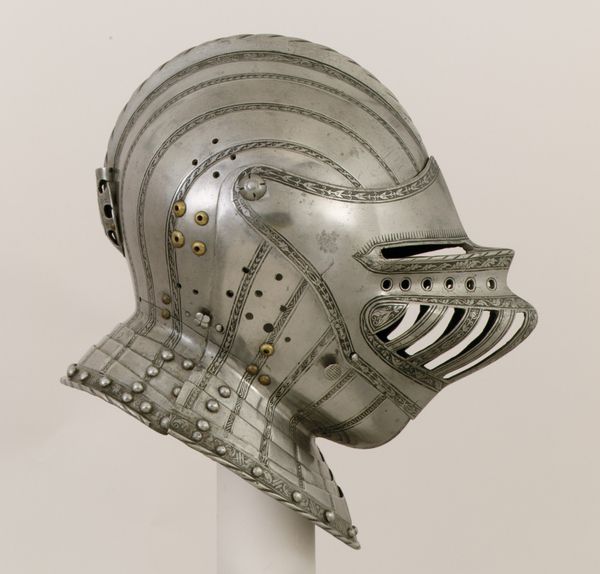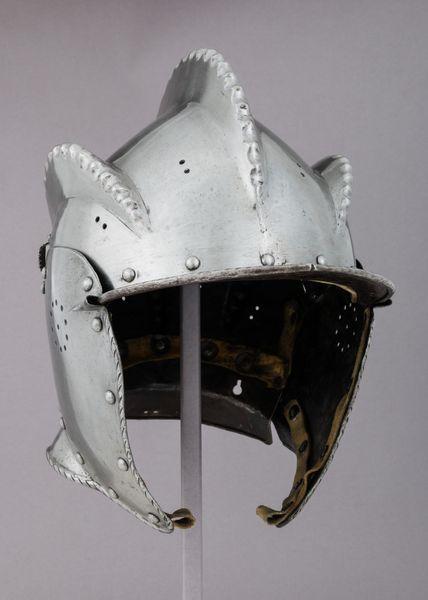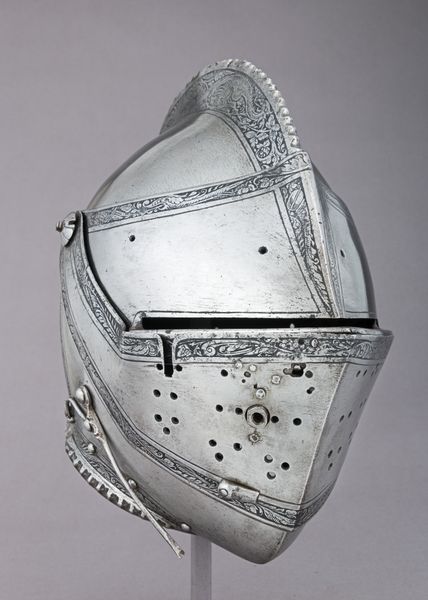
Sallet of Emperor Maximilian I (1459–1519) 1465 - 1520
0:00
0:00
metal, sculpture
#
portrait
#
medieval
#
germany
#
metal
#
11_renaissance
#
sculpture
#
armor
Dimensions: H. 12 in. (30.5 cm); W. 9 in. (22.9 cm); D. 12 3/8 in. (31.4 cm); Wt. 4 lb. 15.7 oz. (2261 g)
Copyright: Public Domain
Curator: Let's consider this fascinating object, a Sallet, made sometime between 1465 and 1520. It was designed for Emperor Maximilian I. Editor: Well, just at first glance, the coldness of the steel and its stark form gives off a rather unsettling, almost dystopian vibe. It looks menacing! Curator: Yes, and in viewing this object as part of the broader history of identity, we can also perceive how armor plays a part in constructing and masking social and political identities in a time where conflict resolution has everything to do with access and power. Who has the capacity to make such a structure and the force to wear it? Editor: Right, and the labor! We must consider the material conditions of its making. Think about the expertise required to transform raw metal into this shaped and articulated defense. Each curve, each rivet. Someone meticulously hammered and formed this. The labor speaks volumes about medieval craft and the economies that supported such production. Curator: And how this links with gender studies when we view a sallet that served to enforce power within a patriarchal structure! In what ways did this symbol work to perpetuate class? Also, this wasn't just a functional item; it had to project an image of power. It functioned as a sculptural portrait of the Emperor. It makes us consider today’s structures that protect particular classes. Editor: True. The visual design also influenced who had the ability to make that armor—this sallet is from a German workshop helmed by Lorenz Helmschmid, making this design particular to Germany. Armorers, materials, trade routes all shaping the final product, beyond just Maximilian’s desires. It's the social relations of production materialized! Curator: Exactly. Viewing objects as social, cultural and political signifiers encourages conversations about history and power structures; discussions about gender, class and ability emerge, fostering engagement with complex historical narratives. Editor: By examining these materials and their construction, we can better grasp not only technological advancements, but also social and economic currents of the time. What seems like simple headgear is a layered encapsulation of human ingenuity, labor and social dynamics. Curator: Absolutely. Editor: Fascinating, really.
Comments
No comments
Be the first to comment and join the conversation on the ultimate creative platform.
